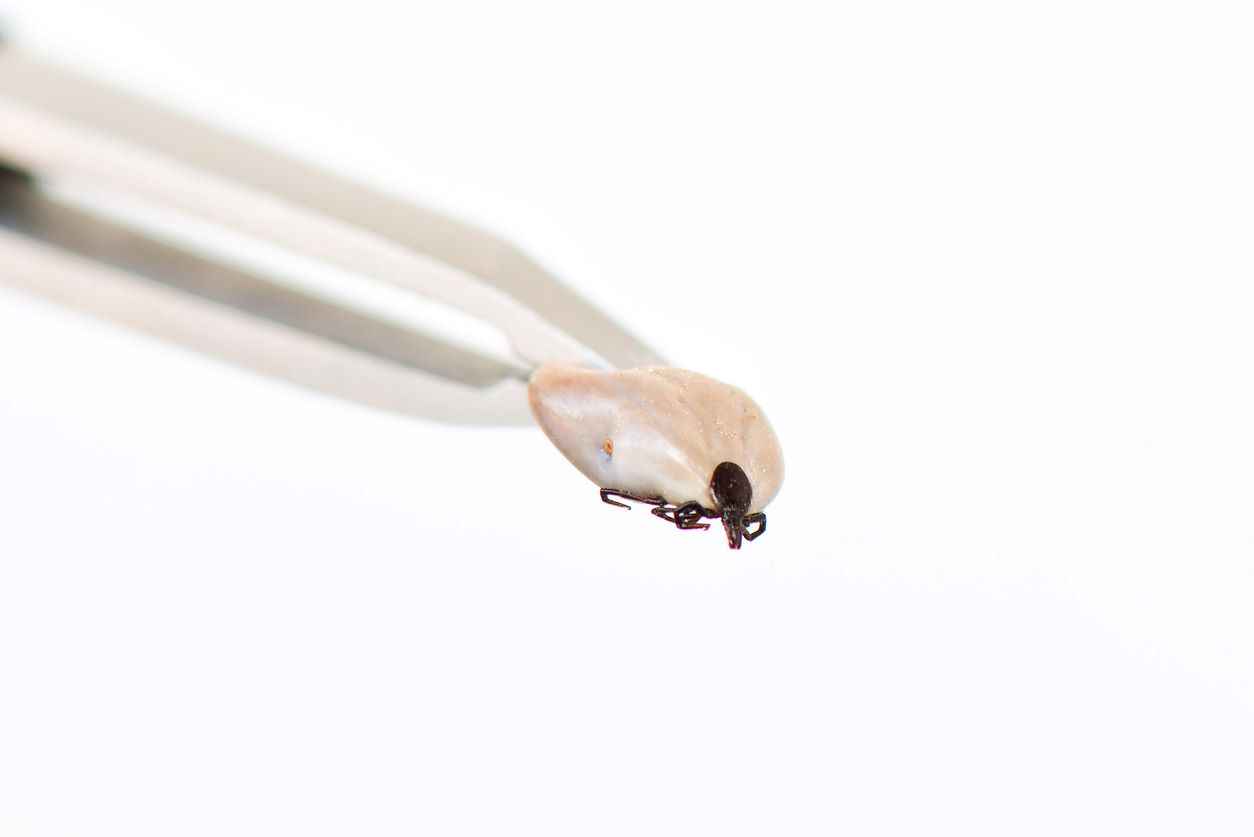Ticks are tiny arachnids that can pose significant health risks to humans and pets alike. These small parasites are found in grassy, wooded areas and can transmit various diseases, including Lyme disease and Rocky Mountain spotted fever. Safely removing ticks is crucial to prevent potential infections and complications.
In this blog, our team at Dewey Pest and Termite Control will explore effective techniques and precautions to safely remove ticks, ensuring the well-being of both you and your furry companions. Whether you’re an outdoor enthusiast or simply enjoying a stroll in nature, knowing how to deal with ticks properly is essential.
Understanding the Risks of Tick Bites
While ticks may seem insignificant, they can transmit several serious diseases, including Lyme disease, Rocky Mountain spotted fever, and babesiosis. If left untreated, these illnesses can lead to symptoms ranging from mild discomfort to severe neurological complications.
Additionally, specific populations, such as children, seniors, and individuals with weakened immune systems, may be more susceptible to the adverse effects of tick-borne diseases. By comprehending the potential dangers of tick bites, you can take proactive measures to minimize exposure and protect yourself from harm.
Identifying Common Tick-Borne Diseases
Identifying common tick-borne diseases is crucial for prompt diagnosis and treatment. Lyme disease, caused by the bacterium Borrelia burgdorferi, is the most well-known tick-borne illness, with symptoms like fever, fatigue, and a characteristic “bull’s-eye” rash. Rocky Mountain spotted fever, transmitted by the American dog tick, can lead to severe complications such as organ failure if left untreated.
Babesiosis, another tick-borne disease, is caused by microscopic parasites that infect red blood cells. It often presents with flu-like symptoms. Ehrlichiosis and anaplasmosis are also bacterial infections transmitted through tick bites. They cause symptoms ranging from fever and headache to respiratory distress. Recognizing the signs and symptoms of these diseases is essential for seeking timely medical attention and preventing further complications.
Step-by-Step Guide to Safely Remove Ticks
Safely removing ticks requires a systematic approach to minimize the risk of infection and ensure complete removal. To safely remove ticks, follow these steps:
- Gather the necessary tools—fine-tipped tweezers, rubbing alcohol or antiseptic wipes, and a sealed container for the tick.
- With the tweezers firmly in hand, grasp the tick as close to the skin’s surface as possible.
- Apply steady, upward pressure to pull the tick straight out without twisting or jerking.
- Once the tick is removed, thoroughly clean the bite area with rubbing alcohol and wash your hands with soap and water.
- Dispose of the tick by placing it in a sealed container or flushing it down the toilet. In the following days, monitor the bite site for any signs of infection, like redness, swelling, or rash, and seek medical attention if necessary.
- Remember to rewash your hands after handling the tick and disinfect the tweezers with rubbing alcohol to prevent the spread of bacteria.
Safely Removing Ticks From Pets
To safely remove ticks from pets, begin by restraining your pet, ensuring they are calm and still during removal. Using fine-tipped tweezers, grasp the tick as close to your pet’s skin as possible, avoiding squeezing its body. Gently and steadily pull the tick straight out, ensuring you remove the entire tick, including its mouthparts.
Be cautious not to twist or jerk the tick, as this can cause parts of it to break off and remain embedded in your pet’s skin, increasing the risk of infection.
After the tick removal, disinfect the bite area with antiseptic wipes and clean your hands thoroughly. In the following days, monitor your pet closely for signs of inflammation or adverse reactions and consult your veterinarian if necessary.
Post-Removal Care and Prevention Strategies
After removing a tick, thoroughly clean the bite area with soap and water and apply an antiseptic to prevent infection. Monitor the bite site for any signs of redness, swelling, or rash, which could indicate an adverse reaction or infection.
To prevent future tick encounters, wear protective clothing when venturing into wooded or grassy areas, use insect repellents containing DEET or permethrin, and perform regular tick checks on yourself, your family, and your pets.
Following these post-removal care and prevention strategies can minimize the risk of tick-borne illnesses and allow you to enjoy outdoor activities safely. Take further preventive action with tick removal and other pest control treatments from Dewey Pest and Termite Control!

